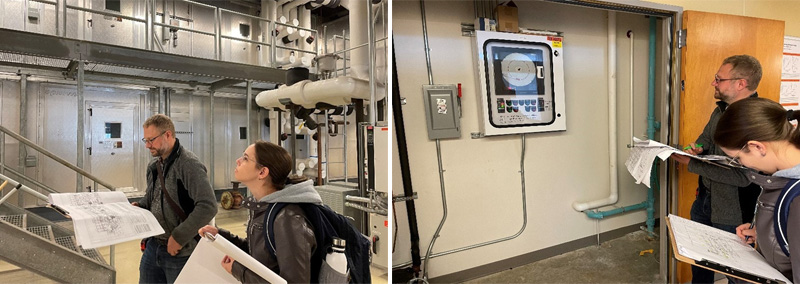Energy Studies Aim to Cut Greenhouse Gas Emissions and Energy Usage in Largest Energy Consumers on Campus
Syracuse University’s Sustainability Management department has been working with NYSERDA (New York State Energy Research and Development Authority) to conduct a study of large energy users on campus. An energy audit of the Life Sciences Complex and a retro-commissioning study of Ernie Davis Hall was completed to see where improvements could be made to reduce energy, cut costs and limit greenhouse gas (GHG) emissions. As expected, labs and data centers use more energy than a generic academic building. Using this data, Sustainability Management determined Ernie Davis, a LEED (Leadership in Energy and Environmental Design) certified building, and the Life Sciences Complex would be good places to focus efforts. GHG emissions are categorized into three scopes. Scope 1 includes all direct emissions from campus through operations owned and controlled by the University. Scope 2 emissions are indirect emissions from utilities like purchasing electricity, and scope 3 refers to all indirect emissions from upstream and downstream activities. The majority of the University’s total CO2e GHG (carbon dioxide equivalent greenhouse gas) emissions are scope 2. 60% of C02e GHG emissions come from the steam and chilled water used to heat and cool buildings. Walk-throughs of the buildings were conducted to assess current operations in partnership with IBC Engineering. Engineers took note of all energy-using equipment, HVAC (heating, ventilation and air conditioning) systems, temperature controls and lighting fixtures. They assessed anomalies and equipment that was not working properly. They also viewed utility bills to establish benchmarks and studied occupancy schedules.

